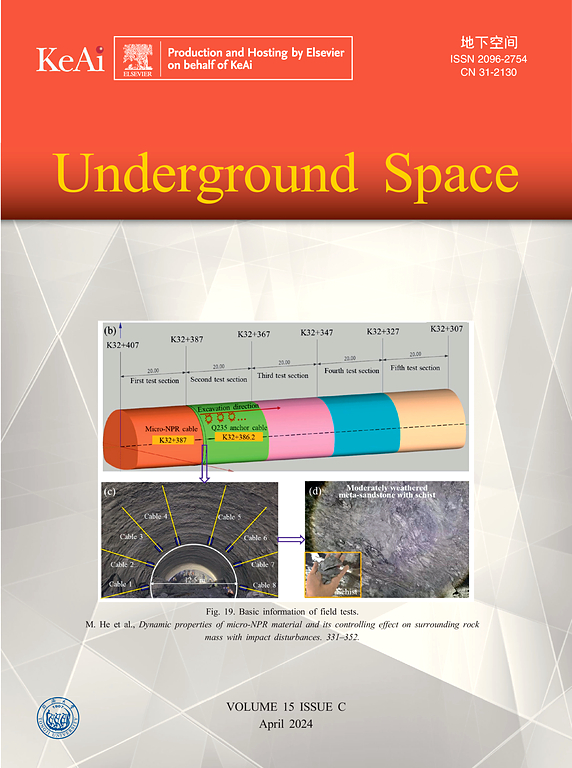Data-driven modeling for evaluating deformation of a deep excavation near existing tunnels
IF 8.3
1区 工程技术
Q1 ENGINEERING, CIVIL
引用次数: 0
Abstract
This study explores an integrated framework combining in-situ test-based numerical and data-driven modeling to assess the performance of a deep excavation-tunnel system. To achieve the goal, a case history of deep excavations adjacent to existing tunnels in silt/sand-dominated sediments is introduced to establish a base three-dimensional finite element (3D-FE) model. In-situ tests such as cone penetration test (CPT/CPTU) and seismic dilatometer test (DMT/SDMT), as an alternative to laboratory testing, are used to determine a set of advanced constitutive model parameters. The established excavation-tunnel numerical model is then validated against filed monitoring data. A dataset from numerical simulation is created for training and testing four machine learning models (i.e., artificial neural network (ANN), support vector machines (SVM), random forest (RF), and light gradient boosting machine (LightGBM)), which predict the maximum wall deflection, ground surface settlement, horizontal and vertical displacements of the tunnel. Results show that the ANN model outperforms other models in prediction capacity. Its generalization ability in practice is further enhanced by comparing field measurement data and empirical equations. The findings suggest that, with the integrated in-situ tests, FE and ANN modeling could be used to predict deformation responses of deep excavations close to existing tunnels in soft soil. The present study is useful and valuable for practical risk assessment and mitigation decisions.
现有隧道附近深基坑变形评估的数据驱动建模
本研究探索了一种将基于原位试验的数值模拟与数据驱动建模相结合的综合框架,以评估深挖-隧道系统的性能。为了实现这一目标,本文以淤泥/砂质沉积物中与既有隧道相邻的深基坑为例,建立了基础三维有限元(3D-FE)模型。作为替代实验室测试的一种方法,采用锥入试验(CPT/CPTU)和地震膨胀试验(DMT/SDMT)等现场测试来确定一组高级本构模型参数。根据现场监测数据对所建立的开挖-隧道数值模型进行了验证。建立了数值模拟数据集,用于训练和测试四种机器学习模型(即人工神经网络(ANN),支持向量机(SVM),随机森林(RF)和光梯度增强机(LightGBM)),这些模型可以预测隧道的最大墙挠度,地表沉降,水平和垂直位移。结果表明,人工神经网络模型的预测能力优于其他模型。通过实测数据与经验方程的对比,进一步增强了其在实践中的泛化能力。研究结果表明,通过现场综合试验,有限元和神经网络模型可用于预测软土中靠近既有隧道的深基坑的变形响应。本研究对实际的风险评估和缓解决策是有用的和有价值的。
本文章由计算机程序翻译,如有差异,请以英文原文为准。
求助全文
约1分钟内获得全文
求助全文
来源期刊

Underground Space
ENGINEERING, CIVIL-
CiteScore
10.20
自引率
14.10%
发文量
71
审稿时长
63 days
期刊介绍:
Underground Space is an open access international journal without article processing charges (APC) committed to serving as a scientific forum for researchers and practitioners in the field of underground engineering. The journal welcomes manuscripts that deal with original theories, methods, technologies, and important applications throughout the life-cycle of underground projects, including planning, design, operation and maintenance, disaster prevention, and demolition. The journal is particularly interested in manuscripts related to the latest development of smart underground engineering from the perspectives of resilience, resources saving, environmental friendliness, humanity, and artificial intelligence. The manuscripts are expected to have significant innovation and potential impact in the field of underground engineering, and should have clear association with or application in underground projects.
 求助内容:
求助内容: 应助结果提醒方式:
应助结果提醒方式:


